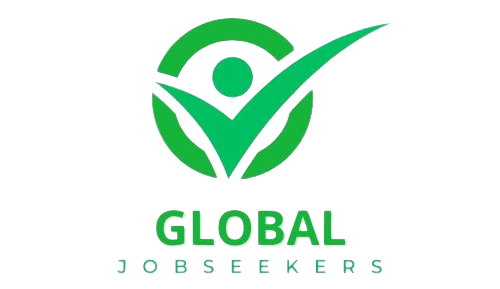LinkedIn has become an essential tool for job seekers, offering a platform to showcase your professional experience, connect with industry peers, and engage directly with potential employers. To maximize your job search efforts, it’s crucial to optimize your LinkedIn profile and actively participate in the LinkedIn community. This article will guide you through the steps to enhance your profile and effectively engage with potential employers to boost your job search.
1. Optimize Your LinkedIn Profile
Your LinkedIn profile serves as your digital resume and often the first impression recruiters and employers will have of you. Optimizing your profile is the foundation of your LinkedIn job search strategy.
a. Craft a Compelling Headline
Your headline is one of the first things people see when they visit your profile, so make it count. Instead of just listing your current job title, consider including keywords that describe your skills, industry, and career goals. For example, instead of “Marketing Manager,” you might use “Marketing Manager | Digital Strategy Expert | Content Creator.” This not only tells visitors what you do but also improves your visibility in LinkedIn searches.
b. Write a Strong Summary
The summary section is your opportunity to tell your professional story. Write a clear, concise narrative that highlights your experience, key achievements, and what you’re looking for in your next role. Use this space to showcase your personality and passion for your work. Aim for a balance between professional accomplishments and personal drive, and be sure to include relevant keywords to improve your profile’s searchability.
c. Highlight Your Experience and Achievements
When listing your work experience, focus on achievements rather than just responsibilities. Use bullet points to outline specific accomplishments, such as “Increased sales by 30% in Q1 2023,” or “Led a team of 10 in developing a new product line.” Quantifying your achievements gives potential employers a clear picture of your impact in previous roles.
d. Add Relevant Skills and Endorsements
The skills section is a key part of your LinkedIn profile. Add skills that are relevant to your industry and the types of jobs you’re seeking. LinkedIn allows your connections to endorse you for these skills, which adds credibility to your profile. You can also take LinkedIn Skills Assessments to validate your expertise in specific areas.
e. Include a Professional Profile Picture
Your profile picture is a critical element of your LinkedIn presence. Choose a professional, high-quality photo where you’re dressed appropriately for your industry. A smiling, approachable photo can make you seem more personable and trustworthy to potential employers.
2. Engage Actively on LinkedIn
Optimizing your profile is just the first step. Actively engaging with the LinkedIn community is crucial for increasing your visibility and connecting with potential employers.
a. Build and Expand Your Network
Start by connecting with colleagues, classmates, and industry peers. When sending connection requests, personalize your message to explain why you want to connect. As your network grows, LinkedIn’s algorithm will expose your profile to a wider audience, increasing the chances of being noticed by recruiters and employers.
b. Share and Comment on Content
Regularly sharing industry-related content and commenting on others’ posts can position you as an active member of your professional community. Share articles, insights, or your own experiences related to your field. Engaging with content allows you to demonstrate your expertise and keeps your profile active, making it more likely to appear in searches.
c. Join and Participate in LinkedIn Groups
LinkedIn groups are a great way to connect with professionals in your industry and stay updated on trends and job opportunities. Join groups related to your field and participate in discussions by sharing your insights and responding to others’ posts. Active participation can help you build relationships with industry leaders and potential employers.
d. Follow Companies of Interest
Identify companies you’d like to work for and follow them on LinkedIn. Engage with their content by liking, commenting, or sharing posts. This not only keeps you informed about the company’s latest news and job openings but also shows your interest in their work. Some companies even track engagement metrics when considering potential candidates.
3. Leverage LinkedIn for Job Applications
LinkedIn offers tools specifically designed to help you in your job search.
a. Use LinkedIn’s Job Search Tool
LinkedIn’s job search tool allows you to search for jobs based on location, industry, and job function. You can also set up job alerts to notify you when new positions that match your criteria are posted. Additionally, LinkedIn often shows you how many applicants have applied for a job, which can help you gauge competition.
b. Reach Out to Recruiters and Hiring Managers
LinkedIn allows you to connect directly with recruiters and hiring managers. If you find a job listing that interests you, consider sending a brief, polite message to the recruiter to express your interest and ask any questions you may have. This direct approach can make you stand out from other applicants.
c. Customize Your Application
When applying for jobs through LinkedIn, take advantage of the option to include a personalized message with your application. This is your chance to briefly explain why you’re a great fit for the role and express your enthusiasm for the opportunity. A well-crafted message can make a strong impression on hiring managers.
d. Utilize LinkedIn’s Open to Work Feature
LinkedIn’s “Open to Work” feature allows you to discreetly indicate to recruiters that you’re looking for new job opportunities. You can specify the types of roles you’re interested in, and LinkedIn will make your profile more visible to recruiters searching for candidates with your skills.
4. Track and Manage Your LinkedIn Activity
Keep track of your LinkedIn activity, including connections made, content shared, and jobs applied for. Regularly review your profile to ensure it’s up to date, and monitor your LinkedIn analytics to see how your posts and profile are performing. LinkedIn’s dashboard provides insights into profile views, search appearances, and the effectiveness of your engagement efforts.
Conclusion
LinkedIn is a powerful tool for job seekers when used effectively. By optimizing your profile, actively engaging with your network, and leveraging LinkedIn’s job search features, you can significantly enhance your chances of landing your next job. Remember that LinkedIn is not just about finding job postings; it’s about building relationships, showcasing your expertise, and making yourself visible to potential employers. With a well-thought-out strategy, LinkedIn can be the key to unlocking new career opportunities.

